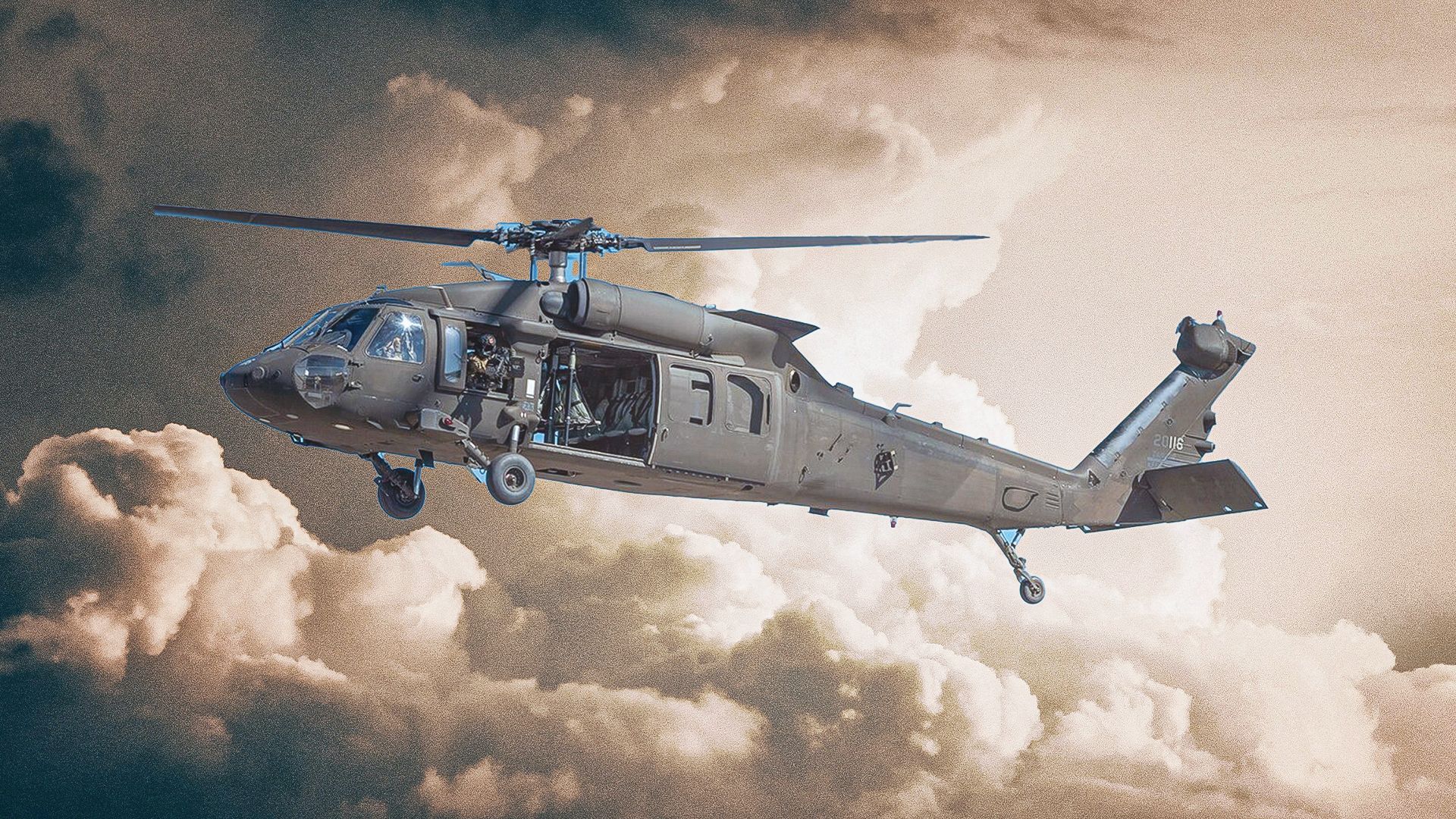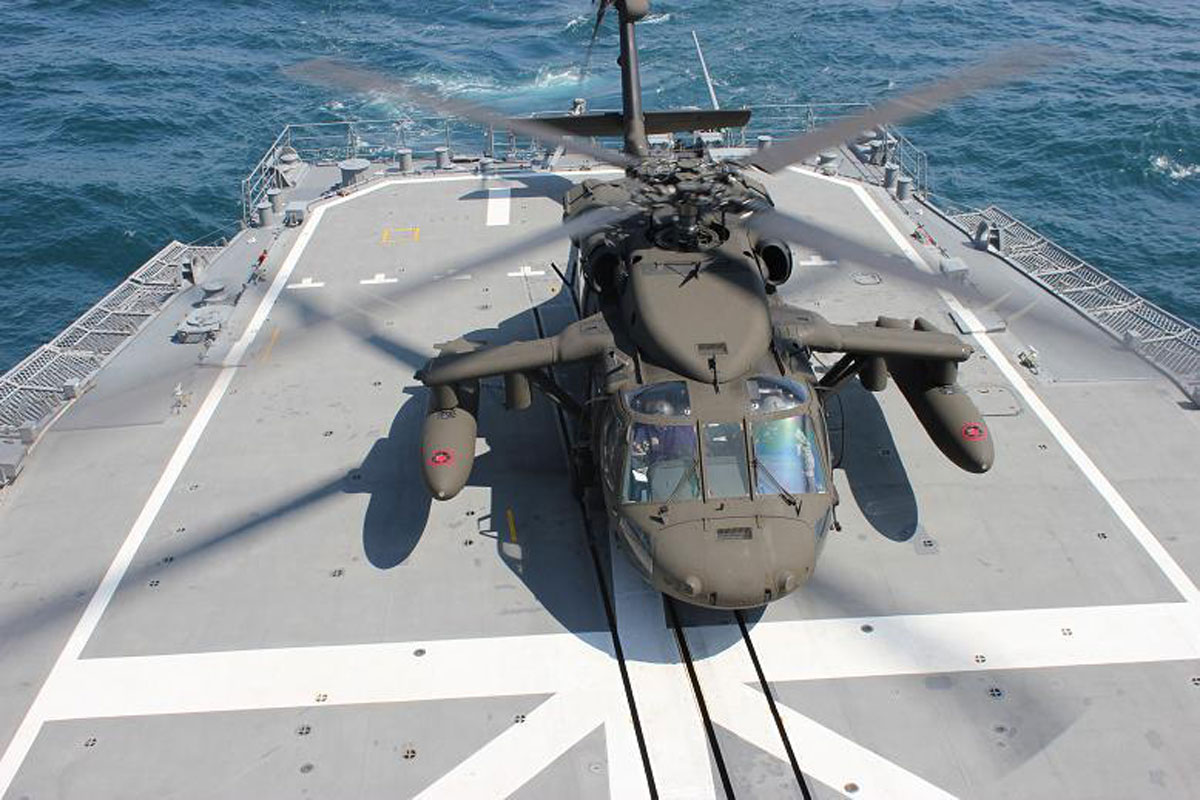UH 60 Helicopter Overview: Key Features and Capabilities for Military Missions
UH 60 Helicopter Overview: Key Features and Capabilities for Military Missions
Blog Article
Checking Out the History and Advancement of the UH 60 Helicopter

Origins of the UH-60
The origins of the UH-60 helicopter can be traced back to the late 1960s, a period marked by the requirement for a functional energy airplane that can adjust to the evolving demands of modern warfare. The U.S. Army recognized the necessity for a replacement for the older UH-1 Iroquois, which was becoming increasingly inadequate for the complexities of contemporary combat scenarios. In 1967, the Army initiated the Utility Tactical Transport Aircraft System (UTTAS) program, which sought to develop a multi-role helicopter efficient in various goals, consisting of army transportation, medical evacuation, and logistical support.
The UH-60 Black Hawk was introduced, showcasing cutting-edge design components and advanced technology that established it apart from its predecessors. The UH-60 promptly acquired acknowledgment for its robust efficiency, dependability, and adaptability, leading the means for its substantial use in armed forces procedures and solidifying its standing as a foundation of United state Army aeronautics.
Key Layout Functions
Cutting-edge design attributes of the UH-60 Black Hawk substantially contribute to its operational performance. One of the most remarkable aspects is its twin-engine setup, which boosts reliability and supplies a greater power-to-weight ratio, allowing the helicopter to do under different conditions. The aircraft's four-blade primary rotor system supplies improved lift and maneuverability, essential for tactical objectives.

Furthermore, the cockpit is made for ideal visibility and functional designs, featuring innovative avionics that improve pilot procedures. The modular design of the UH-60 permits easy upkeep and adaptability, making it appropriate for various objective accounts, from troop transportation to medevac procedures. These essential layout features make sure that the UH-60 Black Hawk remains a flexible and reliable possession in army aviation, capable of fulfilling the needs of contemporary war.
Technical Advancements
Recent technological advancements in the UH-60 Black Hawk have considerably boosted its operational abilities and adaptability. The assimilation of advanced avionics, such as digital flight control systems and improved situational recognition display screens, allows pilots to operate with enhanced accuracy and efficiency. These systems help with enhanced navigation, interaction, and information sharing, making it possible for the helicopter to operate effectively in diverse atmospheres.
Furthermore, the introduction of composite materials has minimized the total weight of the airplane while keeping architectural honesty. This decrease boosts gas performance and expands functional array. The unification of innovative blades modern technology, consisting of using four-blade, totally expressed blades systems, has actually enhanced lift performance and maneuverability, enabling better handling in various flight conditions.

Moreover, advancements in propulsion systems, such as the T700-GE-701D engines, have raised power result and integrity - uh 60. These engines add to remarkable performance in high-altitude and hot-weather conditions
Lastly, the assimilation of self-defense systems and boosted sensing unit packages boosts the Black Hawk's survivability and goal efficiency. Collectively, these technical enhancements guarantee that the UH-60 Black Hawk continues to be an important property in modern-day aeronautics, efficient in adjusting to the developing needs of altruistic and armed forces missions.
Duty in Military Operations
As the foundation of U.S. Military aviation, the UH-60 helicopter plays a critical duty in various army operations, working as a flexible system for battle assistance, transportation, and medevac goals - uh 60. Its style includes the ability to run in diverse settings, making it vital for army motion and logistical support in both unusual and traditional war

In clinical evacuation scenarios, the UH-60 has actually verified vital, dramatically lowering the time to transfer damaged basics soldiers from the battleground to medical facilities. Its advanced avionics and evening vision abilities better make sure objective success under challenging problems. In general, the UH-60 helicopter remains an essential possession, continuously adjusting to meet the advancing demands of military procedures and enhancing the performance of U.S. pressures worldwide.
Future of the UH-60
Looking ahead, the future of the UH-60 helicopter entails considerable advancements in modern technology and capabilities made to enhance its functional effectiveness. As armed forces procedures develop, the UH-60 is anticipated to incorporate cutting-edge innovations, consisting of improved avionics, improved tools systems, and advanced communication devices. These enhancements will permit greater situational understanding and goal adaptability, making sure that the UH-60 continues to be an important property on the battlefield.
One noteworthy growth is the assimilation of fly-by-wire systems, which will improve trip control precision and minimize pilot work. Efforts to update the airframe and engines intend to boost rate, variety, and payload capacity, therefore increasing the helicopter's functional extent.
The future additionally holds pledge for enhanced interoperability with unmanned aerial systems (UAS), allowing worked with goals that take advantage of both manned and unmanned abilities. Furthermore, the consolidation of expert system and artificial intelligence might optimize trip dynamics and upkeep procedures, leading to lowered operational expenses.
Final Thought
The UH-60 Black Hawk helicopter stands for a substantial achievement in armed forces aeronautics, evolving from the united state Military's first requirements for a versatile energy airplane. Its cutting-edge design attributes and continuous technical developments have actually guaranteed its significance in numerous armed forces procedures over the decades. As the demands of modern-day warfare modification, the future of the UH-60 will likely include additional enhancements and adaptations, enhancing its condition as an essential possession for armed forces worldwide.
The UH-60 Black Hawk helicopter represents a substantial turning Full Article point in military aviation, arising from the U.S. Military's mission for a much more versatile and dependable energy aircraft in the late 20th century.The beginnings of the UH-60 helicopter can be mapped back to the late 1960s, a period noted by the need for a flexible utility aircraft that could adapt to the developing demands of modern warfare. Generally, the UH-60 helicopter remains an important property, constantly adapting to meet the evolving demands of military operations and improving the efficiency of U.S. pressures worldwide.
Looking in advance, the future of the UH-60 helicopter entails considerable innovations in technology and abilities developed to boost its operational efficiency.The UH-60 Black Hawk helicopter represents a substantial achievement in armed forces air travel, evolving from the U.S. Army's initial needs for a functional energy aircraft.
Report this page